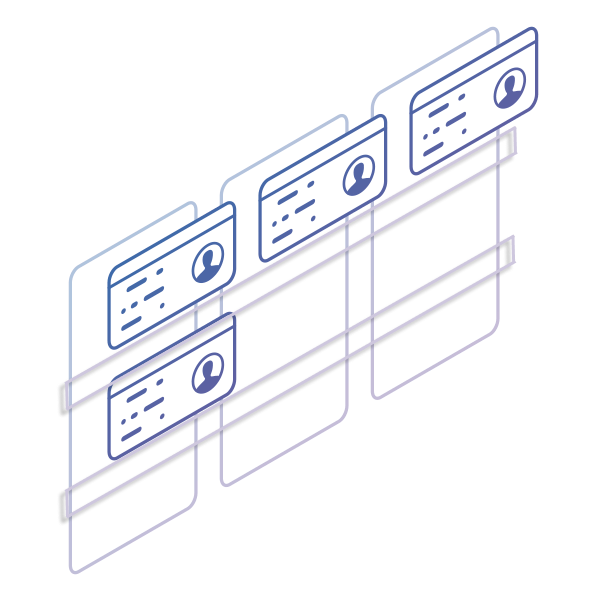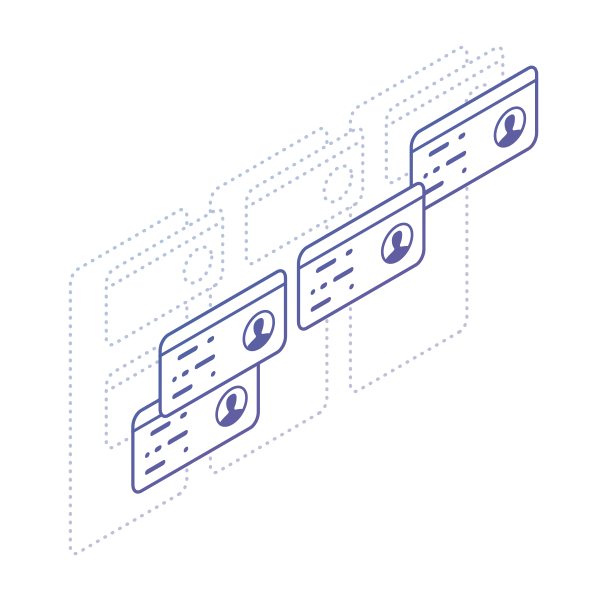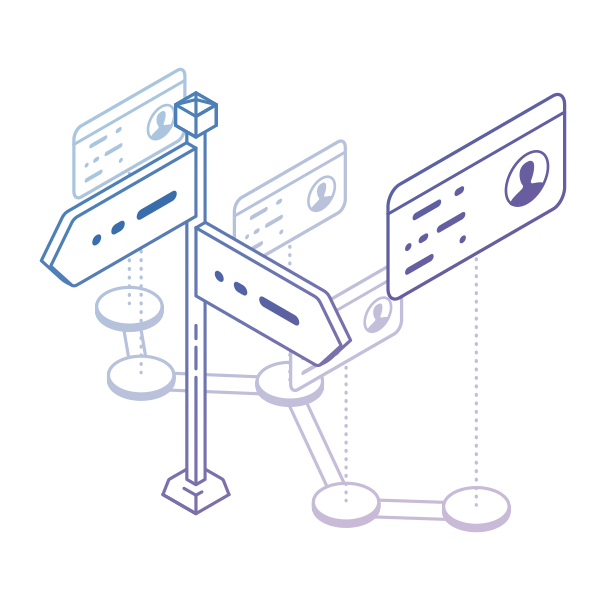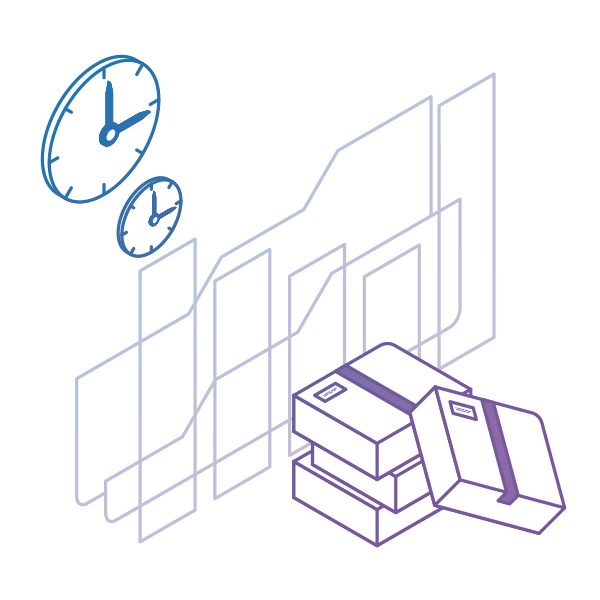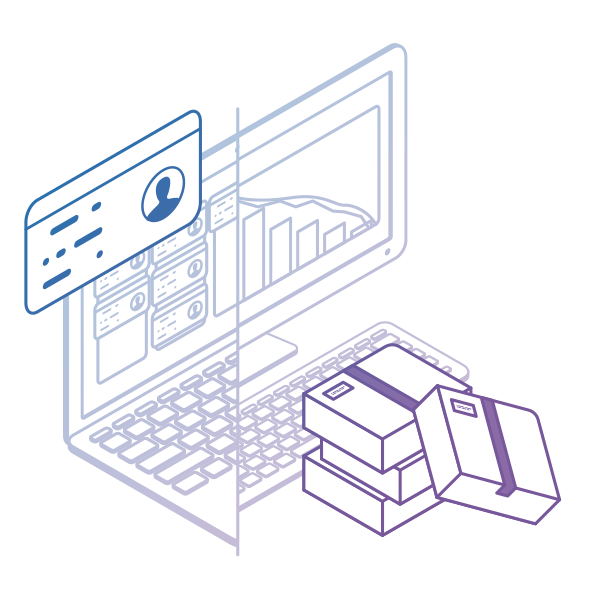Key Takeaways
-
The best Kanban software connects strategy to execution.
Modern Kanban tools go beyond task tracking - they align team goals, automate workflows, and provide analytics to improve delivery performance continuously. -
Choosing the best Kanban software depends on scale and complexity.
Lightweight tools like Trello or nTask fit small teams, while platforms like Businessmap offers scalability, automation, and advanced reporting for enterprise-level needs. -
How to choose a Kanban software?
The best Kanban software delivers real-time visibility through integrated reports and analytics, automations, and seamless integrations.
What Is Kanban Software?
Kanban software is a digital work management solution built on Lean principles and the Kanban method. Think of it as the modern evolution of sticky notes on a whiteboard: cards become digital, boards expand across teams and portfolios, and data turns into insights.
Kanban tools enable you to visualize workflows, track progress in real-time, limit work in progress, and measure the efficiency of your team's delivery. They aren't just "to-do lists" - they connect planning to execution, automate routine work, and generate analytics that help you improve continuously.
Why Use Kanban Tools?
In practice, teams use Kanban software to:
- eliminate waste
- automate repetitive steps
- make reliable forecasts based on historical data.
Done right, this leads to fewer missed deadlines, fewer dropped tasks, and more focus on delivering real value to customers.
What Are the Key Features of Kanban Software?
When evaluating Kanban software, the real value lies in its adaptability and data-driven approach. The best platforms allow you to:
- Customize boards with swimlanes, WIP limits, filters, and workflows that reflect your reality rather than a generic template.
- Manage tasks seamlessly with attachments, dependencies, due dates, and integrations.
- Analyze flow with cumulative flow diagrams, cycle time scatter plots, and Monte Carlo simulations for forecasting.
- Automate processes to eliminate the need for manual reminders, handoffs, and approvals.
- Integrate easily with your existing ecosystem, whether that's email, CRM, Slack, or developer tools.
- Scalability. Small teams can start with a single board, while larger organizations can connect multiple boards into a portfolio view that shows dependencies and performance across departments.
How to Choose a Kanban Software
Choosing the right Kanban software starts with a clear idea of your workflow. Answer the following questions:
- Do you need multiple boards connected across teams?
- Will you enforce strict WIP limits, or do you prefer flexibility?
- Do you rely on advanced analytics to forecast and report progress?
Steps to Implement Kanban Software
Implementation should begin on a small scale.
- Pilot a board with one team, refine the workflow, and then scale it up.
- Start customizing: you'll add swimlanes, automate approvals, or integrate with your CRM once you see how the tool supports your day-to-day work.
- Adjust your setup. Teams that succeed are those that treat their Kanban boards as living systems. They adjust columns, rules, and policies based on feedback, instead of locking into a rigid setup.
Ready to see Businessmap in action?
How Does Kanban Software Support Continuous Improvement?
Analytics is where Kanban software proves its worth. Features like cumulative flow diagrams reveal whether your process is stable or chaotic. Cycle time scatter plots let you predict how long future work will take, while Monte Carlo simulations provide probabilistic forecasts that managers can actually trust.
The beauty of these metrics is that they tie back to Lean's foundation: measure, reflect, and improve. You're not guessing whether your team is faster - you can see lead times shrinking, throughput increasing, and blockers being eliminated.
This is why tools like Businessmap stand out: they don't just show where cards are, they tell you what's slowing you down and what's likely to happen next.
Real Customer Success Story: How Boa Vista Used Kanban Analytics to Drive Digital Transformation
A real-world example comes from Boa Vista, a financial services company in Brazil. Facing six-month delivery cycles caused by siloed departments, they turned to Kanban and later scaled with Businessmap's digital platform.
By linking OKRs directly to team initiatives, working in smaller batches, and using built-in analytics like cycle time scatterplots and histograms, they cut and stabilized cycle times while aligning strategic and operational levels.
The result was a culture of data-driven continuous improvement - showing how the right Kanban software turns visualization into measurable business outcomes.
Read the full Boa Vista case study →
What Are the Top Kanban Software Solutions in 2026?
By 2026, there's no shortage of Kanban platforms, but a few stand out as the most widely used and effective. Here's a look at the top Kanban software solutions and what makes each unique.
↡↡ Jump to our comparison table for a quick overview ↡↡
1. Businessmap (formerly Kanbanize)
Businessmap is a powerful enterprise-grade Kanban platform built for teams that want advanced analytics, automation, and deep integrations. It shines when scaling Kanban across the organization and aligning team initiatives directly to business strategy.
Businessmap is more than just another Kanban tool - it's a recognized leader. Rated 4.8 out of 5, it's been featured in seven Capterra Shortlist reports for 2025, including Kanban Tools, Project Planning, Agile Project Management, Project Portfolio Management, Task Management, and Project Management. This recognition reflects both its depth and flexibility: from advanced customizations, AI-powered whiteboards, and robust automations, Businessmap is designed for teams that want to scale Kanban across the organization.
 Visualizing project management timeline view, initiatives, and individual work items in the Businessmap software
Visualizing project management timeline view, initiatives, and individual work items in the Businessmap software
Key Features
- Kanban boards, swimlanes
- WIP limits
- Live updates to kanban work items
- Whiteboards
- AI-powered features
- Timeline view, Gantt view
- Workflow metrics
- Workflow automation
- Project forecasting
- Automated project status reporting
- Dependency management
- Analytics Module
Ready to see Businessmap in action?
2. Jira Software
Jira remains the go-to for software development teams, especially those working in Agile or Scrum. It offers strong issue tracking and detailed reporting, though its complexity makes it most valuable for technical teams already invested in the Atlassian ecosystem.
Key Features
- Scrum boards
- Roadmaps
- Agile reporting
- Custom filters
- Process automation
- Bugs and defect management
- Search and filtering
Check our detailed Businessmap vs. Jira comparison →
3. ClickUp
ClickUp has become known for its flexibility. It combines Kanban boards with Gantt charts, docs, goals, and automation, making it a versatile choice for teams that want customization. That said, its sheer breadth of features can feel overwhelming at first.
Key Features
- Automations
- Boards with Custom Grouping
- Calendar Syncing
- Docs
- Gantt View
- Goals & Milestones
- 1,000+ Integrations
- Time Tracking & Estimate
4. Asana
Asana is popular with cross-functional teams that value collaboration. Its Kanban boards are easy to use and connect smoothly with task dependencies, timelines, and real-time updates, making it a solid choice for organizations that need visibility across multiple projects.
Key Features
- Activity feed
- Automatic updates to email/inbox
- Create custom calendars and views
- Project Sections and Search Views
- My Tasks list and Focus Mode
- Track tasks and add followers
- See team members’ tasks and priorities
Check more Asana alternatives →
5. Smartsheet
Smartsheet appeals to larger organizations that already use spreadsheets for planning. It combines the familiarity of rows and columns with Kanban boards, dashboards, and workflow automation, making it a great fit for enterprises that want data-driven project management.
Key Features
- One Dashboard
- Multiple Views
- Reports
- Alerts and Automated Actions
- Activity logs
- G Suite and Office 365 integrations
6. Monday
Monday.com takes a more visual approach to project tracking. It combines Kanban-style boards with dashboards, timelines, and automations, making it especially appealing for teams that prefer colorful, data-rich visualizations over traditional Kanban layouts.
Key Features
- Gantt Charts
- Docs
- Integrations
- Automation
- Dashboard
7. ProofHub
With its rich task management functionalities, ProofHub offers a valuable kanban project management solution. You can add details and deadlines for when a task is to be completed or attach documents to each task. In terms of collaboration, you can add comments to each task, use the Discussions section, or use the additional chat boxes.
Key Features
- Task Management
- Board View
- Calendar View
- Custom reports
- Time tracking
- Discussions
8. Teamhood
Teamhood is built for organizations running long-term, complex projects, with Kanban boards at the center of how work gets organized and delivered. Its flexible board structure, swimlanes, and item hierarchies make it easy to map even the most detailed workflows, while supporting teams that need clarity and consistency across multiple initiatives.
Key Features
- Kanban boards
- Gantt charts
- Workload view
- Time tracking
- Agile reporting
- Calendar & timeline views
- Custom fields
- Automations
- AI assistance
- Portfolio overview
9. nTask
nTask offers kanban boards that track workflows of any project, from simple to complex. Users can use default columns or set custom columns based on their needs. You can use nTask Boards to get work done faster and with full transparency by giving due dates, creating to-do lists, giving status updates, assigning tasks to co-workers, and using pre-built industry templates.
Key Features
- Project Management
- Gantt Charts
- Meeting Management
- Task Management
- Team Collaboration Tool
- Bug Tracking
- Kanban Board
- Time Tracking & Timesheet
- Risk Management
10. Azure DevOps
Azure DevOps is designed for teams living in the Microsoft ecosystem. With integrated Kanban boards, reporting, and analytics, it's powerful for development teams that need tight connections to tools like Azure and Office 365.
Key Features
- Task management
- Backlog view
- Status updates
- Work prioritization
- KPI Monitoring
- Analytics reports
11. Paymo
Paymo isn't a technical kanban software per se - it's a project management software that allows users to visualize their workflows in a way that suits them, including Kanban boards. Each workflow can be customized to fit various work styles and needs. Paymo shines thanks to Paymo Track, a 3-in-1 automatic time tracker for desktop. There are collaboration and communication features in Paymo, such as in-app, email, and Slack notifications and reminders, etc., for feedback loops, which can help clarify work requirements and define Kanban policies. Reporting is done two-fold – by time logged or tasks completed.
Key Features
- Manual and automatics time tracking capabilities
- Multiple project views like Kanban and Gantt
- Timesheets & reporting
- Estimate and invoice generation
- Team scheduler and planner
12. Trello
Trello continues to be the entry point for many small teams and individuals new to Kanban. Its drag-and-drop simplicity and visual clarity make it easy to adopt quickly, though it lacks the depth and scalability of more advanced tools.
Key Features
- Kanban boards
- Activity logs
- Built-in automation
- Dashboard, Timeline view
- Workspace, Calendar view
- Single board guests
- Google Apps sign-on
Kanban Software Compared
| Key Features | Advantages | Limitations | Best for | |
| Businessmap | Customizable boards, whiteboards, analytics module, automation, integrations | Highly flexible, comprehensive features | Can feel complex for beginners | Teams needing advanced analytics & automation |
| Jira | Scrum-centric views, reporting, automation | Strong project management, reporting | Complex integrations | Software development teams with Agile/Scrum focus |
| ClickUp | Customizable boards, automation, integrations | Powerful, comprehensive features | Can feel overwhelming for beginners | Teams wanting extensive customization and advanced features |
| Asana | Kanban boards, automation, integrations | Flexible, good for team collaboration | Not ideal for graphics-intensive work | Teams prioritizing flexibility and collaboration features |
| Smartsheet | Dashboards, automation, integrations | Flexible, wide set of features | Can feel complex for beginners | Teams of any size needing strong scalable and collaboration features |
| Monday | Visual boards, data from different sources, integrations | Easy to use, good for collaboration | Limited card formatting | Teams needing a visual approach beyond traditional Kanban |
| ProofHub | Kanban boards, discussions, time tracking | Collaborative, good task management | Limited integrations | Teams needing strong collaboration features within their kanban tool |
| Teamhood | Kanban boards, workload, advanced reporting | Highly visual and structured, flexible and easy to use | Broad toolkit may feel heavy for simple task tracking | Organizations needing robust Kanban for complex, multi-stage projects |
| nTask | Kanban boards, time tracking, templates | Easy to use, affordable | Limited customization | Small teams or individuals seeking simplicity |
| Azure DevOps | Kanban boards, analytics, reporting | Integrates with Microsoft products | Complex non-Microsoft integrations |
Teams heavily invested in the Microsoft ecosystem |
| Paymo | Kanban board, time tracking and reporting, invoicing software | Easy to set up, various collaboration features | Limited project management features and integration options | Small teams needing to do invoicing quickly and have good task management |
|
Trello |
User-friendly, integrations | Simple, visual, good for beginners |
Lacks scalability |
Individuals or small teams new to Kanban |
FAQs
What is the best Kanban software?
In short, there's no single "best" Kanban tool for everyone. If you need advanced, analytics-driven Kanban, Businessmap leads the way. For simple, beginner-friendly workflows, Trello or nTask are safe bets. And if your team already runs on Microsoft or Atlassian products, then Azure DevOps or Jira will feel like a natural fit.
What visualization features should be included in a Kanban tool?
Top Kanban tools offer visual features like swimlanes, WIP limits, timeline and Gantt views, progress indicators, and dashboards. Businessmap adds AI-powered whiteboards and analytics visualizations for deeper insight.
Which Kanban software works best for enterprise-level teams?
Businessmap stands out for enterprise use. It scales across teams and portfolios, supports analytics-driven decision-making, and aligns strategy with execution. Jira and Smartsheet are also strong options for large organizations.
What are the pricing and subscription options for top Kanban tools?
Most Kanban platforms offer tiered pricing - from free or low-cost plans (Trello, nTask, Asana) to custom enterprise packages (Businessmap, Jira, Smartsheet). Businessmap provides tailored pricing based on team size and needs.
Are there free trials or free plans available for popular Kanban software?
Yes. Nearly all major Kanban tools, including Businessmap, ClickUp, and Smartsheet, offer free trials or freemium plans so teams can test features before committing.
How easy is it to onboard and train teams on the leading Kanban platforms?
Beginner tools like Trello and nTask are extremely easy to adopt, while enterprise platforms like Businessmap and Jira may require short onboarding sessions or guided demos. Businessmap offers free training resources, pre-recorded product tours, an extensive YouTube video library, and live demos.





